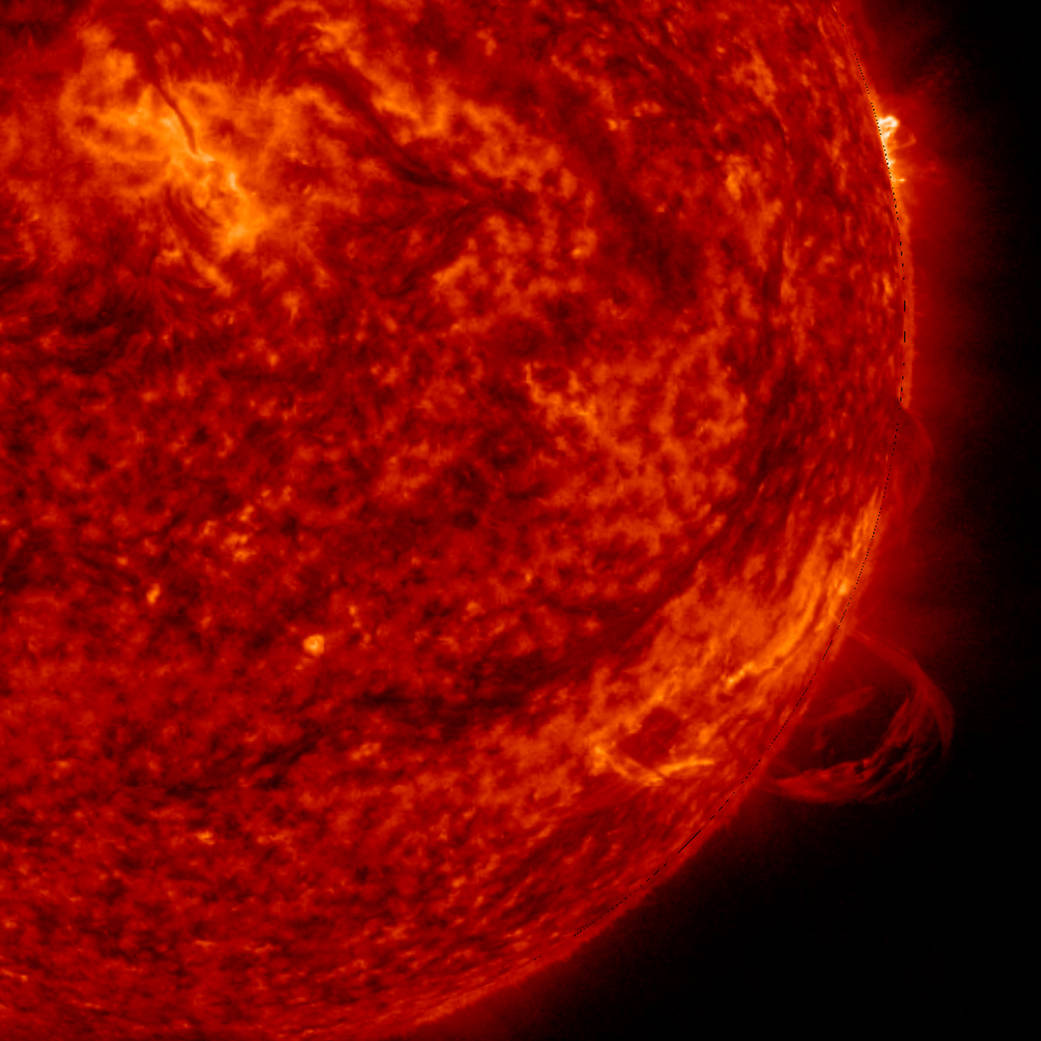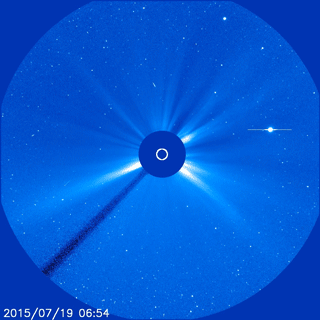Over half a day on July 19, 2015, two long threads of solar material called filaments broke free from the sun and erupted into space. The upper one broke first, sending dark plasma down towards an active region below it. An hour or two later, that lower filament erupted. Filaments are huge threads of relatively cool plasma (as compared to the surrounding material) that originate in a low layer of the sun’s atmosphere, the chromosphere, and are propped up into the much hotter corona by often unstable magnetic fields.
Once it exploded into space, the second filament eruption grew into an impressive coronal mass ejection, or CME. The Solar and Heliospheric Observatory, or SOHO, which is a joint ESA/NASA mission, observed the CME spreading out into space several hours later.
Though CMEs can happen without a filament eruption, a successful filament eruption always precedes a CME. When a filament erupts, it sends a huge cloud of gas, plasma, and magnetic field flying off the sun into space. Sometimes, breaking filaments are not powerful enough to rocket material beyond the sun’s gravity, so the gas and plasma fall back to the sun’s surface. These events are called failed or partial filament eruptions.
To learn more about such solar eruptions, scientists use several kinds of instruments in tandem to examine different parts of the process. To see the filament eruption itself, we observe the face of the sun. This image is from NASA’s Solar Dynamics Observatory, which watches the sun 24 hours a day and can observe extreme ultraviolet light, which is invisible to our eyes. This filament eruption was captured in light of 304 angstroms, typically colorized in red. On the other hand, CMEs are recorded by coronagraphs, which don’t look at the sun at all. Instead, they block the bright face of the sun to better observe its faint atmosphere, called the corona. Using the instruments together, scientists can better understand what causes such explosions on the sun and how they affect our solar system.
Credit: NASA/SDO/Steele Hill




























